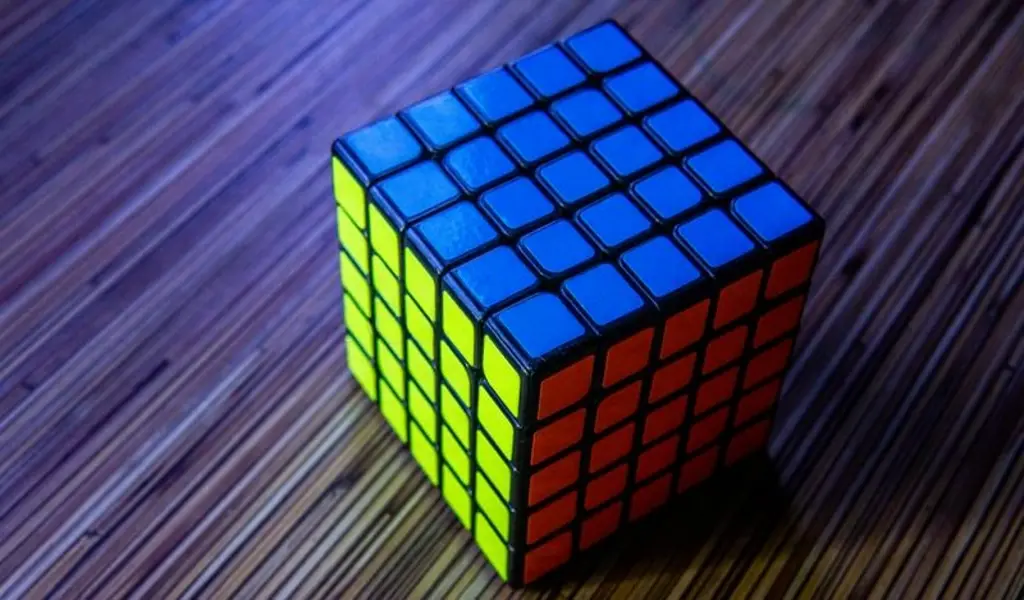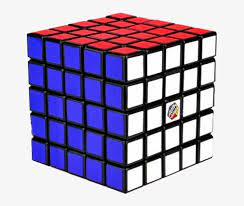The Rubik’s Cube has been a favorite puzzle toy for people of all ages since it was invented in 1974 by Hungarian sculptor and professor of architecture Erno Rubik.
It has become a popular pastime for many people around the world, with speed-cubing competitions and records set by some of the world’s fastest cubers.
While the 3×3 Rubik’s Cube is the most popular, the 5×5 Rubik’s Cube, also known as the “Professor’s Cube,” offers an even greater challenge for those who seek to master it.
In this post, we’ll take a closer look at the 5×5 Rubik’s Cube and explore some advanced techniques and strategies that can help you solve it faster and with greater accuracy.
We’ll also cover blindfolded solving and competition tips to help you prepare for a spinner cube showdown.
Basics of 5×5 Rubik’s Cube
Before we dive into the advanced techniques, it’s important to review the basics of the 5×5 Rubik’s Cube. The cube consists of 98 smaller cubes, with six faces that can be turned independently.
Each face has 25 smaller cubes, and there are eight larger corner cubes and 12 edge cubes. The notation for the 5×5 Rubik’s Cube is the same as the 3×3 Rubik’s Cube, with the addition of two more layers.
To solve the 5 by 5 Rubik’s Cube, you’ll need to follow a series of algorithms that move pieces around the cube in a specific way.
The basic solving techniques include solving the centerpieces first, then the edges, and finally the corners. It’s important to avoid common mistakes such as flipping edge pieces or breaking up solved centers.
Advanced Solving Techniques
Once you have the basics down, you can move on to more advanced solving techniques. Here are a few popular methods:
Centers First Method – This method involves solving the centers of each face first, followed by the edges and corners. This can help simplify the solving process and reduce the number of algorithms needed.
Reduction Method – The reduction method is similar to the centers’ first method, but it involves solving the centers and edges simultaneously, then the corners. This method is faster than the centers’ first method but requires more algorithms.
You Method – The Yau method involves solving the cube layer by layer, starting with the center, then moving on to the edges and corners. This method is favored by many speedcubers as it allows for faster solutions.
Roux Method – The Roux method is a block-building technique that involves solving the corners and then the edges in two separate steps. This method can be faster than the layer-by-layer methods, but it requires more practice.
Strategies for Faster Solving
To solve the 5×5 Rubik’s Cube quickly, you’ll need to develop some strategies for faster solving. Here are a few key strategies:
Look-ahead – Look-ahead is the ability to plan your next move while executing your current move. This can help you save time and reduce pauses between moves.
F2L Pairs – F2L stands for “First Two Layers,” and it involves solving the first two layers of the cube simultaneously. This can help speed up the solving process and reduce the number of moves needed.
Recognition and Execution of Algorithms – Recognizing algorithms quickly and executing them efficiently is key to fast solving. Practice memorizing algorithms and using finger tricks to execute them quickly.
Practice Exercises – Practice is essential for improving your solving skills. Try practicing with timed solves, blindfolded solves, or using a spinner cube to improve your skills.
Finger Tricks and Algorithms
Finger tricks are an important part of solving the 5×5 Rubik’s Cube quickly and efficiently. These tricks involve using specific hand movements to execute algorithms more quickly and smoothly. Here are a few key finger tricks to master:
R U R’ U’ – This is a common algorithm used in the 5×5 Rubik’s Cube and can be executed quickly using the following finger trick: Push the front face up with your thumb while pulling the top face towards you with your index finger. Then push the front face back down with your thumb and turn the top face away from you with your index finger.
R U R’ U2 R U R’ – Another common algorithm that can be executed quickly with the following finger trick: Push the front face up with your thumb, then turn the right face with your middle finger, followed by the top face with your index finger. Then push the front face back down with your thumb and turn the right face back with your middle finger, followed by the top face with your index finger.
F R U R’ U’ F’ – This algorithm can be executed quickly using the following finger trick: Push the front face up with your thumb, turn the right face with your middle finger, and then use your index finger to turn the top face towards you. Then push the front face back down with your thumb and turn the right face back with your middle finger, followed by the top face away from you with your index finger.
Advanced Algorithms for Faster Solving
In addition to the basic algorithms, there are many advanced algorithms that can be used to solve the 5×5 Rubik’s Cube even faster. Here are a few examples:
ZBLL (Zborowski-Bruchem Last Layer) – This algorithm involves solving the last layer of the cube using a specific set of algorithms that require advanced recognition skills.
COLL (Corners of the Last Layer) – This algorithm involves solving the corners of the last layer using a specific set of algorithms.
EPLL (Edge Parity Last Layer) – This algorithm is used to solve edge parity issues that may occur during the solving process.
Learning and mastering these advanced algorithms requires practice and patience, but can significantly improve your solving speed and accuracy.
Blindfolded Solving
Blindfolded solving is a popular challenge for experienced cubers, and the 5×5 Rubik’s Cube offers an even greater challenge. Here are a few tips to help you get started:
Memorization techniques – Memorizing the cube’s orientation and the algorithms required for solving it blindfolded can be challenging.
Try using visual associations, mnemonics, and other memory techniques to help you remember the required algorithms.
Execution strategies – Blindfolded solving requires a different approach than regular solving. Try practicing execution strategies, such as tracing the cube with your fingers or using mental visualization to track the cube’s orientation.
Practice tips – Blindfolded solving requires a lot of practice to master. Try starting with small sections of the cube, and gradually work your way up to full solves. Set goals for yourself and track your progress over time.
Competition Tips
If you’re interested in competing in 5×5 Rubik’s Cube competitions, here are a few tips to help you prepare:
Overview of competitions – Research and familiarize yourself with the competition rules and regulations. Understand the format and requirements of each event.
Tips for preparation – Practice is key to success in competitions. Set aside dedicated practice time, and try practicing under timed conditions to simulate competition pressure.
Strategies for solving under pressure – Competitions can be stressful, and it’s important to have strategies in place to stay calm and focused.
Try deep breathing, visualization techniques, and positive self-talk to stay centered and confident during competition.
Conclusion
The 5×5 Rubik’s Cube is a challenging and rewarding puzzle that offers a variety of techniques and strategies to master.
From finger tricks and algorithms to advanced solving methods and blindfolded solving, there are many ways to improve your skills and solve the cube more quickly and efficiently.
Whether you’re a beginner or an experienced cuber, there’s always something new to learn and improve upon. With practice, patience, and a willingness to try new approaches, anyone can master the 5×5 Rubik’s Cube and take their solving skills to the next level.
Remember to take breaks and enjoy the process, as solving the cube can be a fun and engaging activity. And if you’re interested in competing, be sure to research and prepare thoroughly, and most importantly, have fun!
And for those looking for an even greater challenge, consider trying out the Spinner Cube, a unique twist on the classic Rubik’s Cube that adds an extra layer of complexity to the puzzle-solving experience.
With its rotating discs and multiple layers, the Spinner Cube offers a new set of challenges and opportunities for solving mastery. Happy cubing!
Related CTN News:
Best Shows To Watch On Amazon Prime Video In 2023
Netflix Plans To Release Nearly 90 New Games In 2023
Elden Ring Statistics Reveals Which Boss Kills The Most Players
⚠ Article Disclaimer
The above article is sponsored content any opinions expressed in this article are those of the author and not necessarily reflect the views of CTN News







